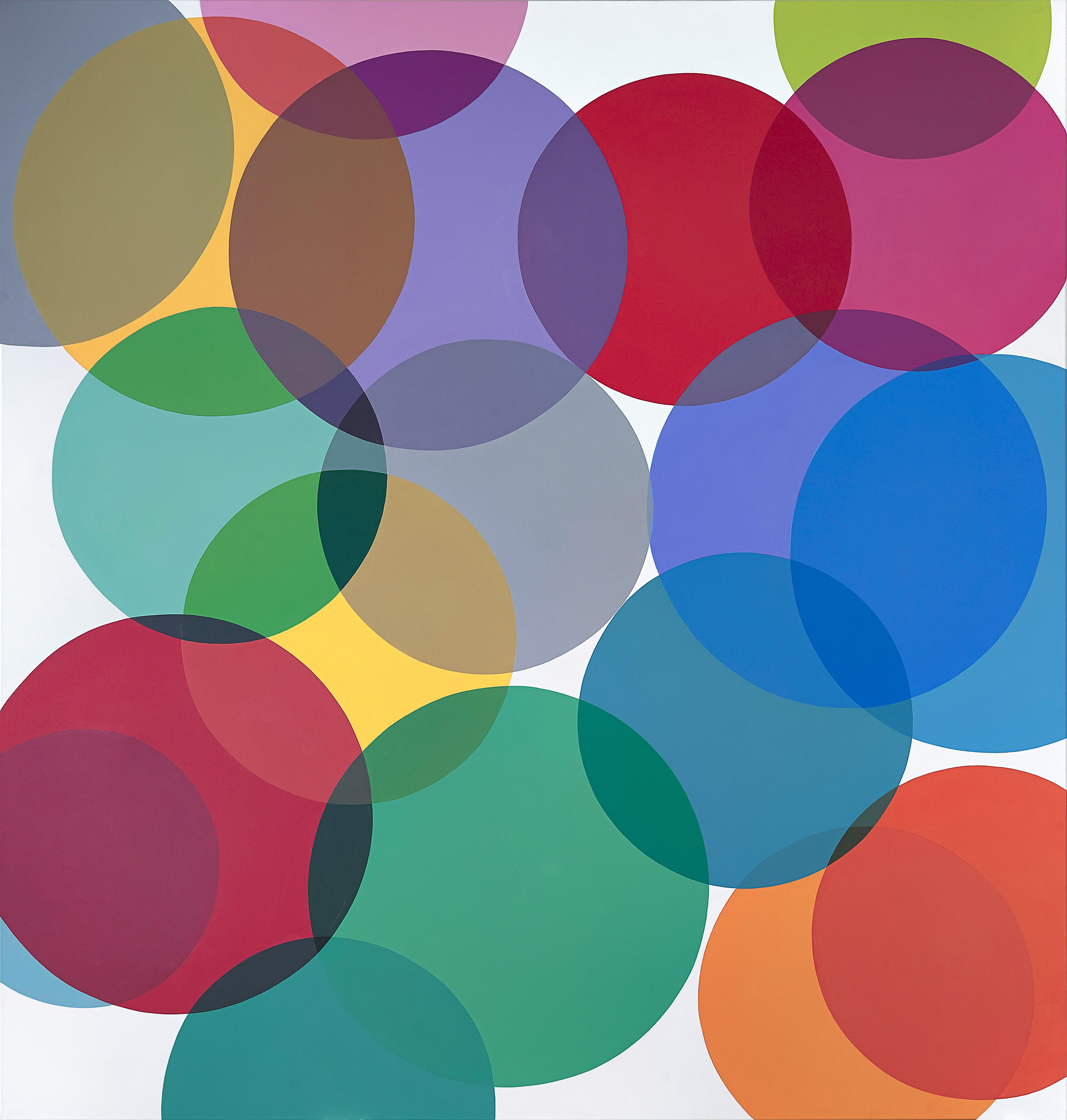(Buenos Aires, 1966)
She was part of the generation of artists who, since the early 1990s, were linked to the Ricardo Rojas Cultural Center in Buenos Aires. This space marked a milestone in the historical account of Argentine art of that decade, as it consolidated a particular aesthetic that, in addition to recognizing the importance of construction processes, especially manual ones, put into circulation trivial, decorative and ornamental materialities. Her work is characterized by the presentation of complex compositions based on the use of simple geometric shapes and a wide range of colors. She has made paintings, watercolors, videos, photographs and installations in urban spaces. She has also worked as a teacher, curator and cultural manager.
Between 1985 and 1990 she attended the workshops of Diana Aisenberg and Juan Doffo, studied scenography with Héctor Calmet, and carried out theoretical studies with Lucas Fragasso, Hugo Petruschansky, and Marta Zatonyi, among others. In 1991 she received the so-called Kuitca Scholarship through the Fundación Antorchas. These training experiences allowed her to inquire about her creative process.
In this frame of reference, her aesthetic proposal, oriented towards geometric abstraction, was outlined as a renewed tendency of the postulates of the geometric avant-garde of the 1940s in Argentina, with clear references to the European artists Piet Mondrian, Joseph Albers, Max Bill, and the Uruguayan Joaquín Torres García. The paintings of this period as well as of later stages are characterized by the creation of geometric schemes or groupings of figures built with curved or polygonal lines, closed or open. All of them show a wide and varied development of color, the result of studies on the visual and sensory perception of light-color.
In parallel to her paintings, she took photographs of those things that attracted her attention, either for personal reasons or for aesthetic sensibility. These images made up the montages of the works Mi hermano y yo, 1999 and Carteles de bailantas, 2007. Her continuous research on color, form, composition and movement has led her to experiment, for years, with different formats: videos, watercolors, silkscreen prints, publications, installations and interventions in public and private spaces.
She participated in the Art Omi residencies, New York, 1997; Apex Art with a Fulbright-National Endowment for the Arts grant, New York, 2000; Chinati Foundation, Marfa, 2002 and The Rockefeller Foundation Bellagio Center Residency, Italy, 2005.
From 2006 to 2009, together with Diana Aisenberg, Melina Berkenwald, Marcelo Grossman and Roberto Jacoby, she managed and coordinated the International Artists Residency in Argentina (RIAA). Subsequently, she was a director of CIA (Centro de Investigaciones Artísticas) in Buenos Aires. Management shared with Judi Werthein and Jacoby, which she carried out until 2011. She has worked as a director in theater shows and videos. She has also conducted seminars on artwork analysis and participated with texts in the visual arts magazine Ramona.
She has made numerous site-specific installations including Collins Park, Miami Beach (2019); Estación Catalinas del Subterráneo de Buenos Aires (2019); Museo de Arte Moderno de Buenos Aires (2017); Faena Forum, Miami (2016); Notas de Luz, Usina del Arte, Buenos Aires (2016) and Project Row Houses, Houston (2003).Solo shows in New York, Houston, Buenos Aires, Sao Paulo, Miami, Marseille and Texas. In 2013 the Museo de Arte Moderno de Buenos Aires presented her retrospective exhibition Gramática del Color, curated by Victoria Noorthoorn.


 Hasper Graciela
Hasper Graciela